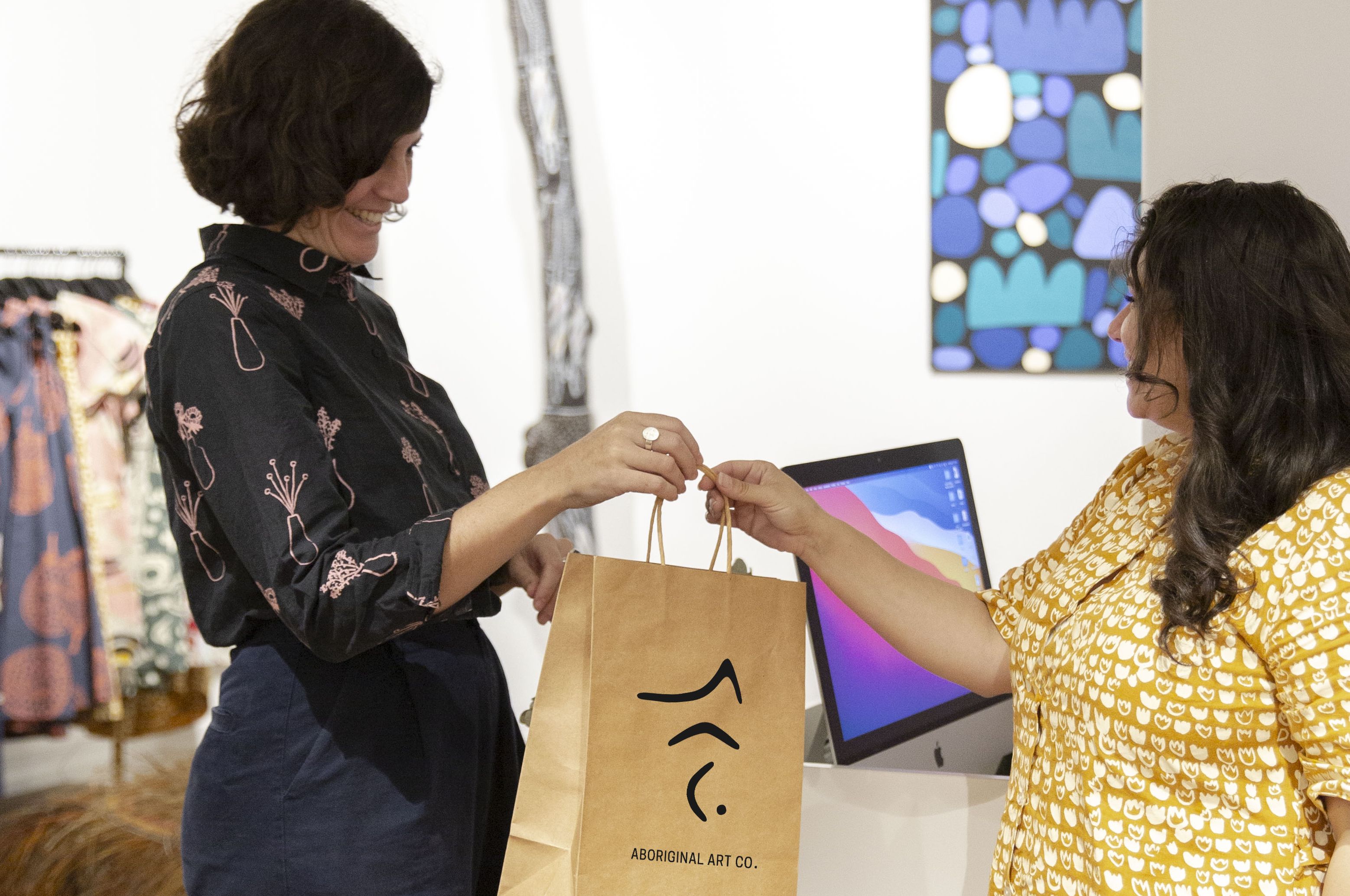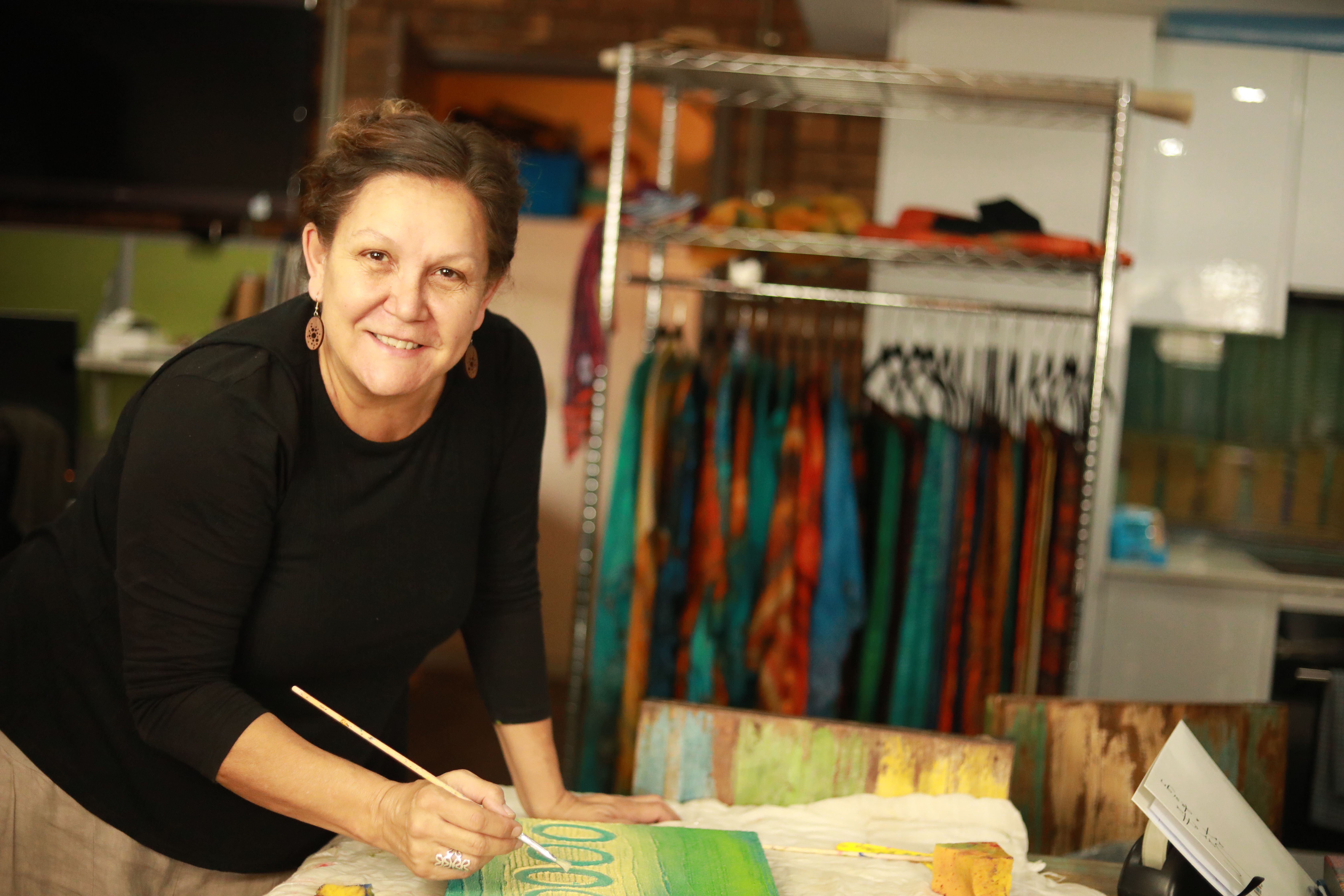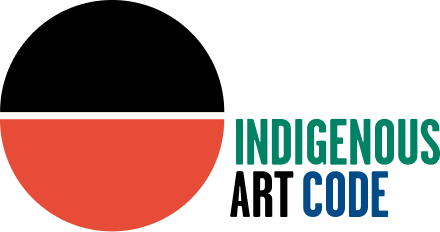Advice for purchasing art ethically

As a buyer of Aboriginal and Torres Strait Islander art, and products featuring reproductions of their artwork, you can play an important role in ensuring artists get a fair go.
There are thousands of Aboriginal and Torres Strait Islander artists across the country. Many are members of Aboriginal and Torres Strait Islander-owned art centres, and many work independently of an art centre’s structure and support. As a buyer of art, we encourage you to learn about the business model of any code signatory you plan to purchase from and how this informs their relationship with the artist.
The Indigenous Art Code does not suggest that purchasing from any single source is superior to another. Artists should be empowered to make decisions about commercial agreements and negotiate the market on their terms.
We offer the following advice for anyone looking to purchase Aboriginal and Torres Strait Islander art, and products and merchandise featuring reproductions of their artwork:
Look for and purchase from Indigenous Art Code Signatory Members.
Code Signatory Members are signatories to the Indigenous Art Code of Conduct (the Code). They must adhere to and demonstrate their ongoing commitment to upholding the ethical standards laid out in the Code.
Search for current IartC Code Signatories here.
Ask questions
We encourage consumers, irrespective of where and how they purchase artwork (in person or online), to do their research, inform themselves about the artists and their communities and to ask questions. Some good questions to start with are:
- Who is the artist?
- Where is the artist from?
- How does the artist get paid?
- How did the artwork or product come to be in a gallery/store available for purchase?
- If it is a reproduction of an artist’s work, how are royalties or licensing fees paid to the artist?
Ethical galleries and code signatories will also be willing and able to answer questions in any of the following areas:
- About the artist – their other work, history and community
- About the art centre – where it is, how long has the gallery been working with them and if the artist always works through that art centre
- How the gallery sources its art and how it pays the artists
- How much of the sale price goes to the artist
Most ethical code signatories are open about their business models. Many get their work from art centres on consignment, and pay the art centres a fixed percentage when they sell it. Some code signatories pay a fair price to artists upfront; this price should be commensurate with what they know the retail price of the work will be.
Some unscrupulous code signatories pay artists a small amount for the work up front, sometimes exploiting artists in a vulnerable position. They go on to charge inflated retail prices for the work. While not illegal, the Indigenous Art Code does not consider this ethical practice. In some instances, artists are not given truthful information about the true market value of their work.
Check the documentation
Any piece of Aboriginal and Torres Strait Islander art over AUD$250 should come with a Certificate of Authenticity. Certificates of Authenticity verify in writing that the artwork for sale is the original work of the artist named. Photographs of an artist creating or holding an artwork are not certificates of authenticity.
Request and check the certificate for any work you intend to purchase. Make sure it is on an art centre or official gallery letterhead and that all the details match the artwork itself. If the artwork source is from one of the many Aboriginal and Torres Strait Islander owned and governed art centres, the gallery or code signatory (if not the art centre) should also provide the buyer with the original documentation from the art centre.
The main purpose of Certificates of Authenticity is to document provenance and authenticity (the history or chronology of ownership of an artwork and its source). Provenance is not the same as an ethical supply chain. In relation to Aboriginal and Torres Strait Islander art, what is of primary concern is the transparency of the initial transaction between the artist and code signatory and whether any power imbalances were exploited in those transactions.
Some things to look out for which may be indicators of unethical dealing can include:
- A lack of artist attribution. An artwork should always be accompanied by clear acknowledgement of the artist/s who created it, whether it is an original work of art or a reproduction. For example, merchandise such as bags, scarves, jewellery, homewares and artefacts that are manufactured overseas and do not attribute an artist are cause for concern.
- If the code signatory is trying to prove the provenance of artworks using photos of artists holding the work, rather than official certificates of authenticity.
- A code signatory’s willingness to ‘do a deal for you’. Ethical galleries usually use a sales model that returns a consistent percentage to the art centre and artist. Offering a significant discount to close the sale can be a red flag- who wears the price reduction, the code signatory or the artist?
If a code signatory or business is not open with you about how they source artwork or their relationship with the artist, and they are unwilling to answer your questions, it may be a signal to walk away.
Things to consider when buying art directly from an artist

Buying art directly from an artist is great opportunity to learn more about the artist and their work. Be genuine in showing your interest and respectful when asking the artist questions. Here are a few things to consider:
- Don’t haggle on price. The price of an artwork has been self-determined by the artist and may reflect the cultural knowledge, level of skill and time involved in its creation and/or represent a proven market value that has already been established for their work.
- The work of an artist identifying as Aboriginal and Torres Strait Islander is intrinsically linked to their cultural identity and authority, their experiences and their perspective of the world as a First Nations person. Their artwork will reflect these unique and varied expressions.

